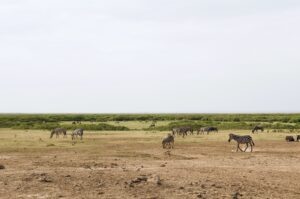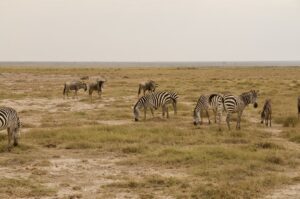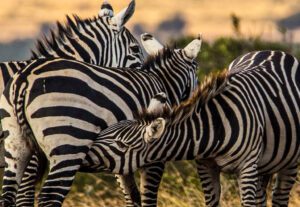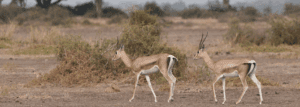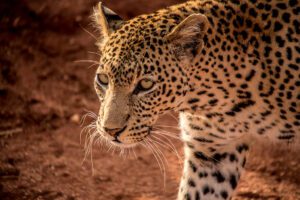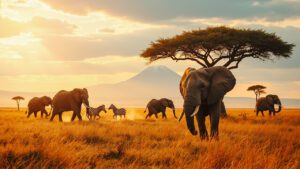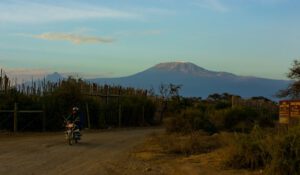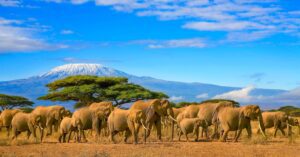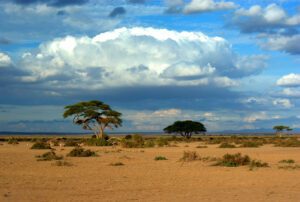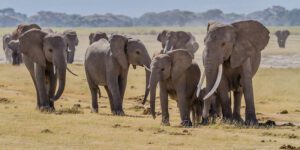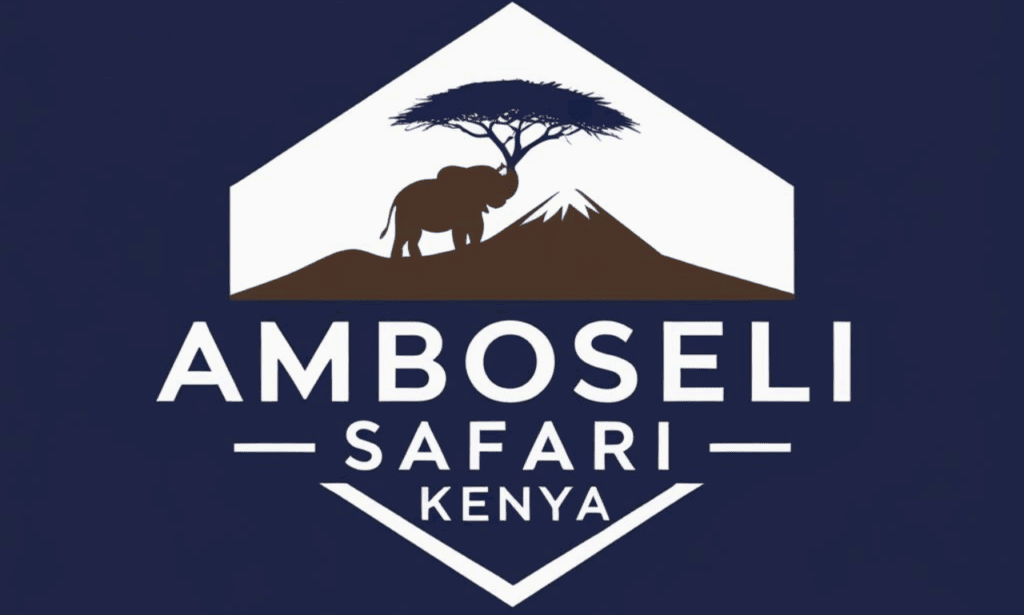Imagine a place where wide-open grasslands meet towering mountain views, where elephants roam freely under the shadow of Africa’s tallest peak, Mount Kilimanjaro. Amboseli National Park is one of Kenya’s most famous treasures, but how did it become the amazing wildlife haven it is today? Knowing its history helps us understand not only its importance to animals and people but also why it’s worth protecting. Whether you’re curious about its early days, its connection to local communities, or how it became a top tourist spot, let’s break it all down into simple, fun bites of info!
When was Amboseli National Park established?
Amboseli National Park, located in southern Kenya, was officially established in 1974. Before it became a national park, the area was designated as a Maasai Game Reserve in 1906. During this time, the land was set aside primarily for the use of the Maasai people, a nomadic pastoralist community known for herding cattle, goats, and sheep. However, with the growing recognition of the area’s unique ecosystem and stunning wildlife, the Kenya government decided to transition it to a national park in the 1970s.
The shift to national park status occurred as part of efforts to protect the environment and wildlife, such as large elephant herds, lions, and cheetahs, from human activity like overgrazing and poaching. By granting it official park status, the government could regulate conservation efforts, manage tourism, and create resources to safeguard its delicate ecosystem.
An example of its significance at the time was the unique mix of wildlife and natural beauty, featuring open plains, acacia woodlands, and marshlands that drew not only scientists but also tourists. The park’s establishment also coincided with Kenya promoting itself as a global safari destination. Amboseli became a key piece in the country’s broader conservation strategy.
Even though it was established as a national park in 1974, the Maasai people still hold cultural and historical ties to the area. Today, Amboseli National Park continues to be one of Africa’s most iconic parks, treasured for its biodiversity and breathtaking views of Mount Kilimanjaro.
What is the significance of the name “Amboseli”?
The name “Amboseli” comes from the Maasai language, one of Kenya’s indigenous languages. It roughly translates to “salty dust.” This name reflects the arid and semi-arid nature of the land that makes up the park. Amboseli lies in the rain shadow of Mount Kilimanjaro, meaning it receives very little rainfall. Because of this, the park features large expanses of dry, dusty plains, which are often covered with salt particles left behind by the evaporation of water from seasonal lakes.
This “salty dust” has an important historical and ecological significance. For one, it contributes to Amboseli’s unique landscape and helps attract some of the most iconic African wildlife. Elephants, for instance, thrive here and are often seen digging up salty soil because salt is essential for their diet and health.
Furthermore, the name reflects the intimate understanding that the Maasai people have of their environment. To the Maasai, it has always been much more than just “dusty”; it’s a landscape capable of sustaining life in a harsh climate. The salty plains, for instance, attract herbivores like zebras and wildebeests, which in turn attract predators like lions and cheetahs.
Thus, the name “Amboseli” isn’t just a description of the land but also a reminder of how this challenging environment has shaped life and culture in the area. Today, the name symbolizes the resilience of the ecosystem, surviving and thriving despite the tough conditions.
What indigenous communities are historically connected to Amboseli?
The Maasai people are the indigenous community most historically connected to Amboseli. The Maasai are a semi-nomadic pastoralist group known for their colorful clothing, remarkable beadwork, and deep cultural connection to livestock. For centuries, they lived in harmony with the wildlife and natural surroundings of the region, moving their herds of cattle, goats, and sheep across the landscape in search of pasture and water.
To the Maasai, Amboseli is not just land but part of their cultural identity. They see themselves as stewards of the land and its animals. Traditionally, the Maasai used sustainable grazing practices that allowed the land to recover and thrive. Their semi-nomadic lifestyle ensured that no single area faced overgrazing, keeping ecosystems balanced and intact.
The Maasai also hold a spiritual connection to the environment and Mount Kilimanjaro, which serves as a backdrop to Amboseli. For them, Kilimanjaro is a sacred mountain, and its snow-capped peak is seen as a powerful symbol. According to Maasai customs, the landscape of Amboseli, along with its wildlife, carries cultural significance that is reflected in their stories, songs, and rituals.
However, when Amboseli National Park was established in 1974, much of the ancestral lands where the Maasai grazed their animals became restricted. This led to tensions between conservation policies and the Maasai people’s traditional way of life. Over the years, efforts have been made to build cooperation between park management and the Maasai, focusing on how to balance conservation with the rights and livelihoods of indigenous communities.
Today, the Maasai elders, warriors, and women often play an essential role in Amboseli’s tourism industry by sharing their culture with visitors through performances, village tours, and crafts. This helps preserve their traditions while contributing economically to their communities. Overall, the Maasai remain deeply tied to Amboseli, and their history is inseparable from the story of the park itself.
How has Amboseli’s location influenced its history and development?
Amboseli National Park is located in southern Kenya near the border with Tanzania, with the iconic Mount Kilimanjaro providing a stunning backdrop. Its unique location has been a critical factor in shaping its history and development. For starters, this is a semi-arid region, which creates a striking contrast between dusty plains and lush, green wetlands fed by underground springs originating from Mount Kilimanjaro’s glaciers. Despite its dry environment, these water sources drew plenty of wildlife and human communities to the area, making Amboseli an ecological and cultural hotspot.
Historically, the location made Amboseli a gathering ground for wildlife migrations, as the animals moved across the Kenyan-Tanzanian border in search of water and vegetation. This cross-border movement added to Amboseli’s importance as a conservation area. The region also became significant for indigenous communities, particularly the Maasai, who are pastoralists and depend on the land’s resources for their cattle. Amboseli’s location as part of Maasai territory led to years of interaction between the park’s wildlife and this community’s way of life.
In terms of development, the park’s closeness to Mount Kilimanjaro has made it a tourism magnet. While the mountain is technically in Tanzania, tourists flock to Amboseli for one of the best views of Africa’s tallest peak. This has created significant revenue through tourism and has highlighted Amboseli on the global map as a place of natural beauty. However, the cross-border aspect of the area has sometimes caused tensions in management strategies. Wildlife doesn’t recognize borders, so efforts to protect migratory animals, like elephants, often require cooperation between Kenya and Tanzania.
In summary, Amboseli’s location has shaped it into a crossroads for wildlife, people, and tourists, deeply influencing its history and ongoing development.
What role does Mount Kilimanjaro play in the park’s history and identity?
Mount Kilimanjaro, although located in neighboring Tanzania, plays a massive role in Amboseli National Park’s history and identity. It’s not just a mountain, it’s the majestic backdrop that defines the park. With its snow-capped peak towering at 5,895 meters, Kilimanjaro creates one of the most iconic landscapes in Africa, drawing photographers, tourists, and nature enthusiasts from around the world. Many people come specifically to Amboseli for the breathtaking views of elephants and other wildlife set against the backdrop of Kilimanjaro.
Historically, the mountain has always been seen as a source of life for Amboseli. Kilimanjaro’s glaciers release streams of melted water that seep underground and feed Amboseli’s swamps and wetlands. In this semi-arid environment, those water sources are vital for both animals and humans, making the mountain an essential part of the park’s ecosystem. Without Mount Kilimanjaro’s water, Amboseli could not sustain the amazing variety of animals like elephants, lions, and zebras that live there.
Culturally, Kilimanjaro also carries deep significance for the Maasai people, who live around Amboseli. The mountain is viewed as sacred by some, symbolizing strength and endurance. Its looming presence has always influenced how the local communities view their environment and live in harmony with it.
In terms of branding and identity, Amboseli National Park is so closely tied to Kilimanjaro that the two are almost inseparable in people’s minds. It’s one of the main reasons Amboseli is one of Kenya’s most famous parks, even though the mountain itself isn’t in Kenya. The global appeal of Kilimanjaro elevates Amboseli’s status as a tourist destination, demonstrating why this iconic peak is so significant to the park’s history, culture, and international identity.
How did Amboseli transition from a Maasai reserve to a national park?
Before becoming a national park, Amboseli was originally part of Maasailand, the territory historically inhabited by the Maasai people. In 1906, during British colonial rule, the area was designated as the “Southern Reserve” to set aside land specifically for the Maasai community to continue their traditional pastoralist lifestyle. However, this arrangement didn’t fully prioritize Maasai livelihood. Over time, colonial authorities and developers began seeing Amboseli’s potential as a wildlife conservation area and tourist attraction, leading to tensions between the Maasai’s use of the land and conservationists’ goals.
The transition started taking shape in the mid-20th century as wildlife in the area gained attention for its international significance. In 1948, the colonial government finally declared the area a wildlife reserve, called Amboseli Game Reserve. This status attempted to balance the interests of conservation and Maasai land rights, allowing wildlife protection under certain regulations while still permitting limited Maasai grazing.
The push to upgrade Amboseli to a national park came in the early 1970s. As tourism grew in Kenya, the government realized Amboseli’s immense potential to attract visitors and generate revenue. However, turning Amboseli into a national park required stronger protections for wildlife, which conflicted with the Maasai’s traditional cattle grazing. Despite resistance from the Maasai, Amboseli was officially gazetted as a national park in 1974. The government compensated the Maasai by allowing them to continue grazing their cattle in certain buffer zones and offering some financial benefits through tourism revenue. This marked the final stage in Amboseli’s transition.
Today, Amboseli’s history as a former Maasai reserve continues to influence its management. While wildlife thrives in the park, officials must balance conservation with maintaining good relations with local Maasai communities. That delicate transition from a reserve to a park set the stage for this ongoing partnership.
What are the key milestones in Amboseli’s conservation history?
Amboseli National Park has a rich history of conservation, marked by several key milestones that highlight the efforts to protect its unique ecosystem and wildlife. Originally, the land was part of the traditional Maasai grazing area. However, growing external interest in this region as a wildlife hub and the development of Kenya’s tourism industry brought changes. One major milestone was its designation as a National Reserve in 1948. At that time, the land was managed in partnership with the local Maasai community. This designation aimed to conserve the fragile environment while recognizing the Maasai’s long-standing cultural connection to the landscape.
The transition of Amboseli from a reserve to a National Park occurred in 1974. This change was driven by a need for stricter protection of its ecosystem and wildlife, particularly the iconic populations of elephants and other large mammals. However, this was a controversial move because, under Kenyan law, National Parks come with more restrictions, which limited the ability of the Maasai to use the land for traditional grazing. These tensions highlighted the delicate balance between conservation and community needs.
Another significant milestone was the recognition of Amboseli’s global importance when it was named a UNESCO Biosphere Reserve in 1991. This designation underscored the park’s critical role in biodiversity conservation and solidified its reputation as a vital natural heritage site. Additionally, Amboseli has been at the forefront of elephant conservation, with ongoing research by organizations like the Amboseli Trust for Elephants, which has been studying the park’s elephants for over 50 years. Their work has contributed to the global understanding of elephant behavior and conservation.
Overall, these milestones show Amboseli’s journey as a center for preservation, scientific research, and a striking example of the ongoing challenge of balancing conservation, community needs, and tourism.
How has tourism impacted Amboseli National Park over the years?
Tourism has played a significant role in Amboseli’s history, both positively and negatively. It has brought considerable financial benefits to Kenya, making the park one of the most visited destinations in the country. The park’s proximity to Mount Kilimanjaro and the chance for visitors to see large herds of elephants up close have made Amboseli particularly appealing. Revenue generated from tourism helps fund conservation efforts, including anti-poaching initiatives, park management, and scientific research. It also contributes to the Kenyan economy and creates jobs for local communities, such as guides, park rangers, and hospitality staff.
However, tourism has also created challenges. The popularity of Amboseli means that at times the park has become overcrowded with visitors, particularly during peak tourist seasons. An excessive number of vehicles following animals like elephants, lions, or cheetahs can disturb wildlife behavior and put stress on the ecosystem. For example, constant vehicle traffic can degrade vegetation and scare animals away from certain areas, disrupting their natural routines.
Moreover, while tourism generates funds, these profits don’t always trickle down equally to local communities. This can lead to tensions, especially when local people feel that their needs or rights to the land are overlooked. For instance, conflicts around grazing access for Maasai livestock have been sparked by restrictions imposed to preserve the park for tourists.
In recent years, there’s been a push toward sustainable tourism practices. Initiatives such as limiting vehicle numbers in certain sections of the park and encouraging eco-friendly lodges have helped reduce the negative footprint of tourism. Additionally, partnerships with nearby Maasai communities seek to ensure that tourism benefits are shared through cultural tourism experiences and community conservation programs. In conclusion, while tourism has undoubtedly brought opportunities to Amboseli, managing its impacts is critical to protect the park’s delicate balance of nature, wildlife, and community.
What environmental or social challenges has the park faced historically?
Amboseli National Park has historically faced numerous environmental and social challenges due to its unique position as a vital wildlife habitat located within a human-use landscape. One of the primary environmental challenges lies in its semi-arid environment, which can experience prolonged droughts. During drought periods, water and food become scarce for both wildlife and the livestock owned by local Maasai communities. For example, the droughts of 2009 and 2017 caused severe losses of vegetation and water in Amboseli, leading to significant deaths of both grazing animals and predators that depend on them.
Another problem involves human-wildlife conflict. Since Amboseli is surrounded by Maasai villages, there is frequent competition between wildlife and livestock for the limited available resources. Elephants and other large animals sometimes venture out of the protected park areas and into farmlands, which can lead to crop destruction and economic losses for farmers. In response, some farmers might retaliate by killing wildlife, intensifying conflicts. Lions and other predators, on the other hand, sometimes prey on Maasai livestock, causing additional tension.
Socially, a long-standing challenge in Amboseli has been balancing the Maasai community’s traditional way of life with expanding conservation efforts. When the park was re-designated as a National Park in 1974, the restrictions it imposed prevented the Maasai from grazing their cattle in certain areas where they had done so for centuries. While this was important for conservation, it also created resentment and economic hardship for the Maasai, whose livelihoods are closely tied to livestock.
Efforts to address these issues include community conservation projects that involve the Maasai in protecting Amboseli and ensuring they receive financial benefits from tourism. Agreements support coexistence between people and wildlife through measures like compensating farmers for livestock lost to predators or creating wildlife corridors that allow animals to leave the park. However, climate change and growing human populations around the park continue to complicate these efforts, making it an ongoing challenge to protect Amboseli’s unique environment while supporting its surrounding communities.
What is the historical significance of Amboseli’s wildlife populations?
The wildlife populations of Amboseli National Park are historically significant because they represent one of Africa’s most iconic ecosystems and have played a key role in shaping conservation efforts in Kenya and beyond. Amboseli is renowned for its large elephant herds. These elephants are not only important for the environment but are also a symbol of wildlife conservation on the global stage. In the 20th century, Amboseli became a hotspot for studying the behavior and social structures of elephants, largely through the work of renowned researchers like Cynthia Moss. Her studies helped highlight the complex social behaviors of elephants and brought attention to their struggles with poaching.
Historically, Amboseli’s wildlife also played a central role in conflicts and negotiations between the government’s conservation initiatives and the indigenous Maasai communities. The Maasai have coexisted with wildlife in this region for centuries, with their traditional pastoralist practices allowing the ecosystem to thrive. However, tensions arose during colonial and post-colonial periods when the land was declared a protected area, limiting Maasai access to grazing land and water sources. Protecting the park’s wildlife became a priority, sometimes at the cost of disrupting the Maasai way of life. This historical interplay between wildlife conservation and human land use is crucial to understanding Amboseli’s heritage.
Additionally, the park’s diverse wildlife, lions, cheetahs, buffalo, giraffes, and hundreds of bird species, has historically made Amboseli a must-visit destination for global tourism. This tourism brought attention to the importance of preserving such ecosystems but also raised challenges in balancing ecological sustainability with economic benefits. Amboseli’s wildlife populations are, therefore, deeply connected to larger conversations around environmental ethics, indigenous rights, and the value of biodiversity in shaping history.
How has the relationship between local communities and the park evolved?
The relationship between local communities, particularly the Maasai people, and Amboseli National Park has evolved significantly over time. Initially, the creation of the park brought a lot of tension between the Maasai and the Kenyan government. The Maasai people have lived in the Amboseli region for centuries and relied on the land for their traditional practices, such as cattle grazing and accessing water. When the area was declared protected, beginning with the Maasai Southern Reserve and later as Amboseli National Park in 1974, these practices were restricted. The government prioritized wildlife conservation and tourism, often without taking Maasai needs and culture into account.
In the decades that followed, there was a growing recognition that the well-being of the local Maasai population is directly linked to the health of the ecosystem. For example, the Maasai have traditional knowledge about managing resources and coexisting with wildlife, which has been key to the area’s ecological stability for generations. Collaborative projects began to emerge, involving the community in conservation by allowing them to benefit from the tourism revenue generated by the park. Today, initiatives such as community conservancies enable the Maasai to manage their land and receive a share of the financial benefits from tourism and conservation.
This partnership has fostered a more positive relationship over time, although challenges still remain. Some Maasai community members still feel the impact of losing grazing lands, while human-wildlife conflicts, such as predators attacking livestock, create ongoing strain. However, the dialogue between the park authorities and the communities has improved, encouraging shared goals of conservation and prosperity.
Ultimately, the evolving relationship between the Maasai and Amboseli National Park highlights the importance of involving local communities in conservation efforts. It underscores a lesson: protecting the natural world doesn’t have to come at the cost of displacing people who have sustainably lived there for centuries.
What policies or international efforts have influenced Amboseli’s conservation?
Amboseli’s conservation has been shaped by a combination of national policies, government initiatives, and international efforts aimed at protecting wildlife and ecosystems. At the national level, the Kenyan government has passed laws to safeguard its protected areas, such as the Wildlife Conservation and Management Act. This legislation outlines the framework for planning, research, and anti-poaching enforcement in parks like Amboseli. In particular, it helps mitigate threats such as illegal wildlife trade, habitat loss, and human-wildlife conflicts.
Internationally, Amboseli has benefitted from programs under organizations like the United Nations Environment Programme (UNEP) and the International Union for Conservation of Nature (IUCN). These groups advocate for sustainable land use, protection of biodiversity, and reducing human impact on fragile ecosystems. Amboseli’s elephants, for example, are considered a priority species under the Convention on International Trade in Endangered Species of Wild Fauna and Flora (CITES). The fight against ivory poaching, which surged in Africa during the late 20th century, brought global attention to Amboseli’s elephant populations and led to stricter international policies on ivory trade.
Another key international effort comes through partnerships with non-governmental organizations (NGOs) like the World Wildlife Fund (WWF) and African Wildlife Foundation (AWF). These groups fund anti-poaching efforts, research projects, and community-based conservation initiatives. For example, NGOs have worked with local Masaai communities to establish conservation zones around Amboseli, ensuring wildlife can roam freely while residents benefit through tourism revenues.
The concept of eco-tourism has also influenced Amboseli’s conservation. Policies now encourage sustainable tourism practices, ensuring that visitors leave a small ecological footprint while providing economic benefits to nearby communities. As a result of these combined efforts, Amboseli stands as a model for balancing ecological needs with human development on a global scale.


